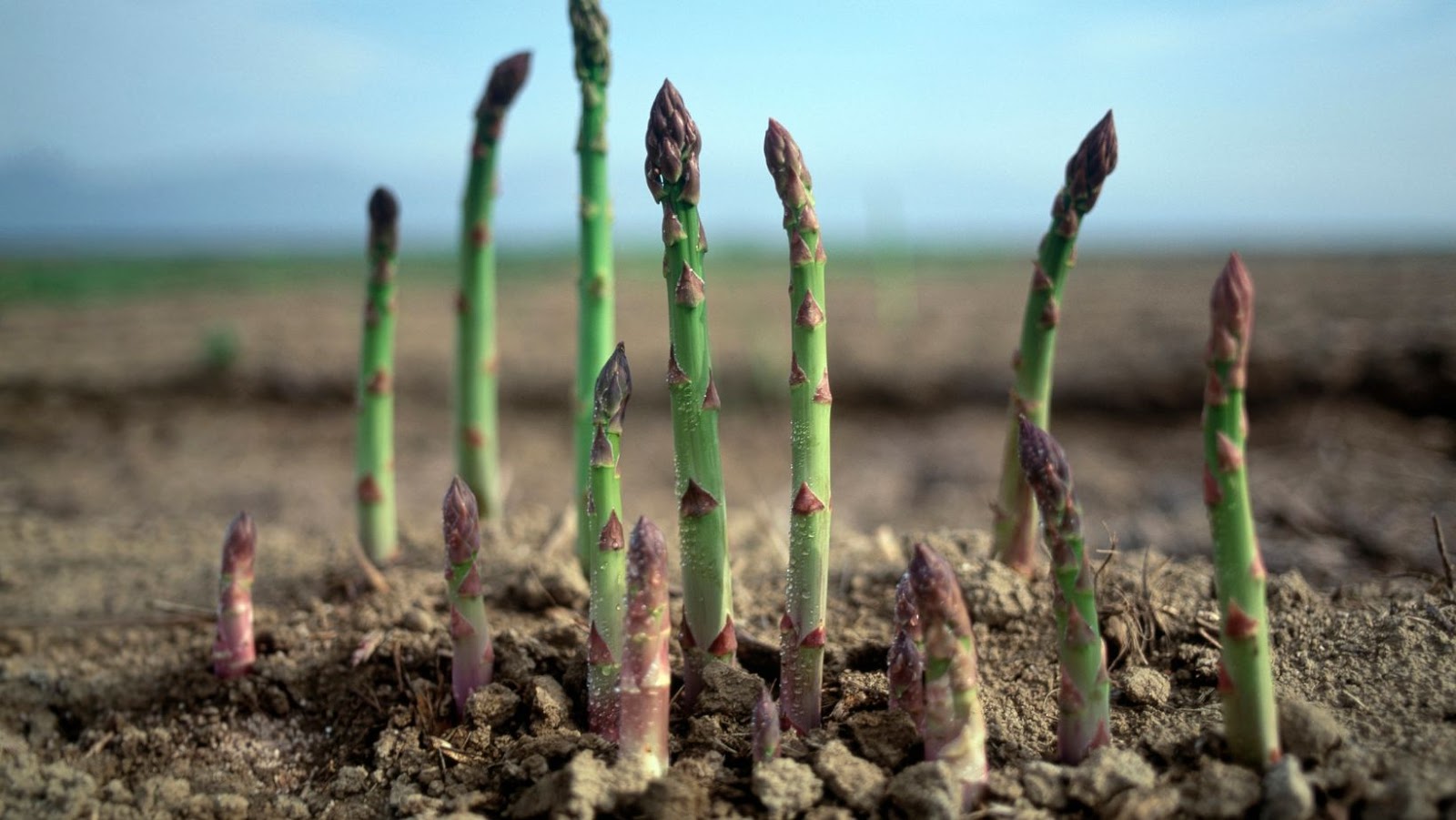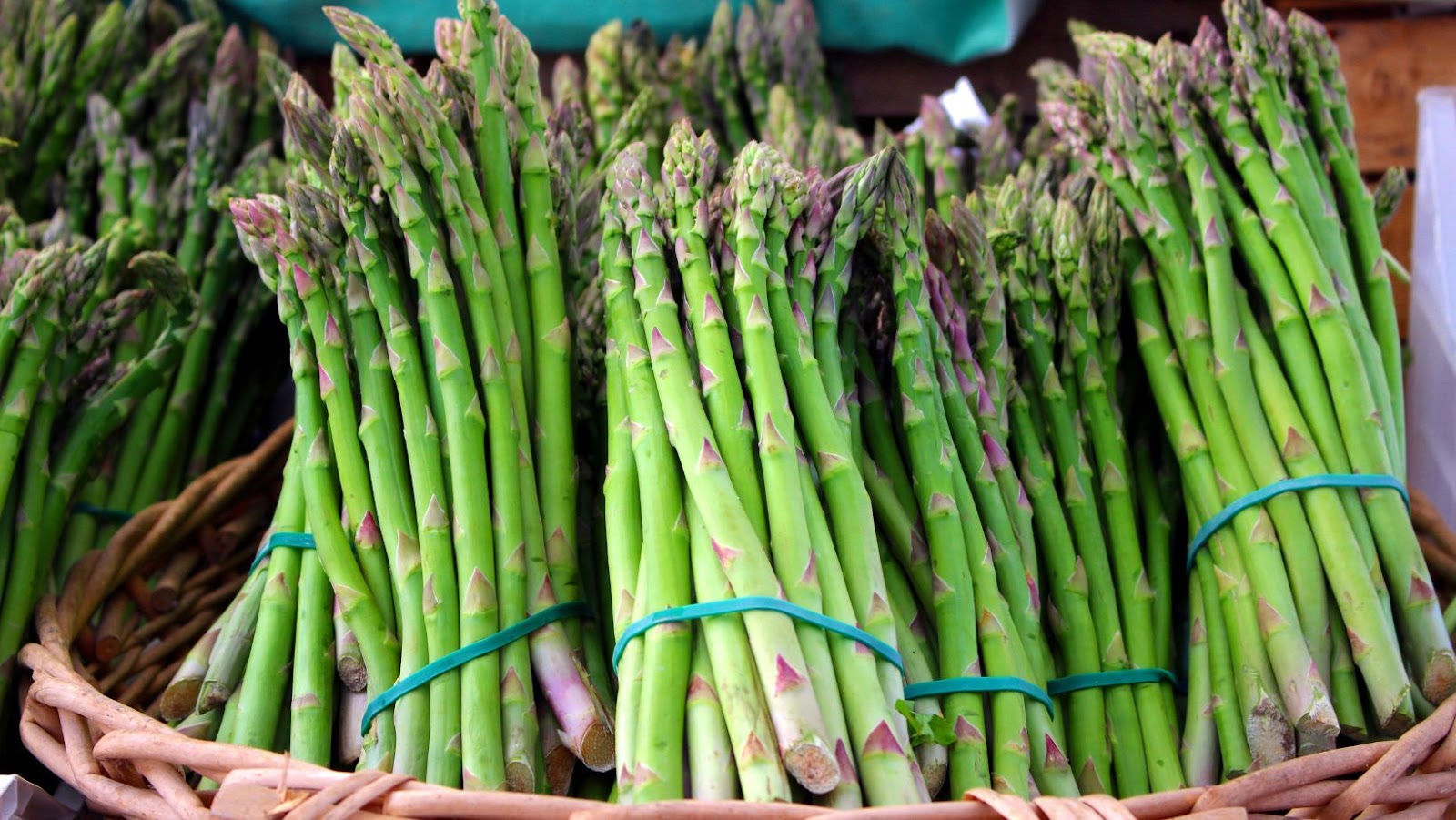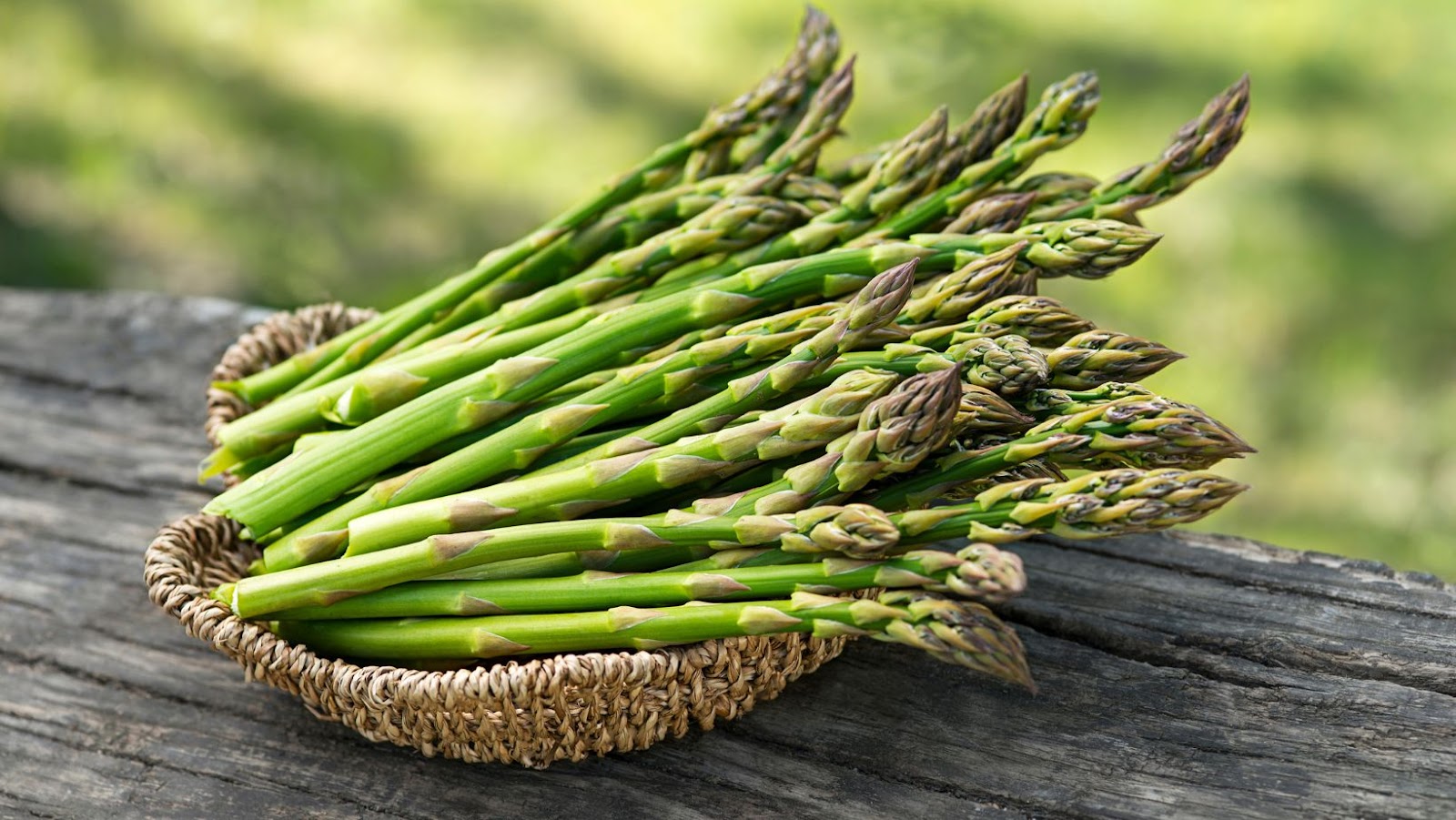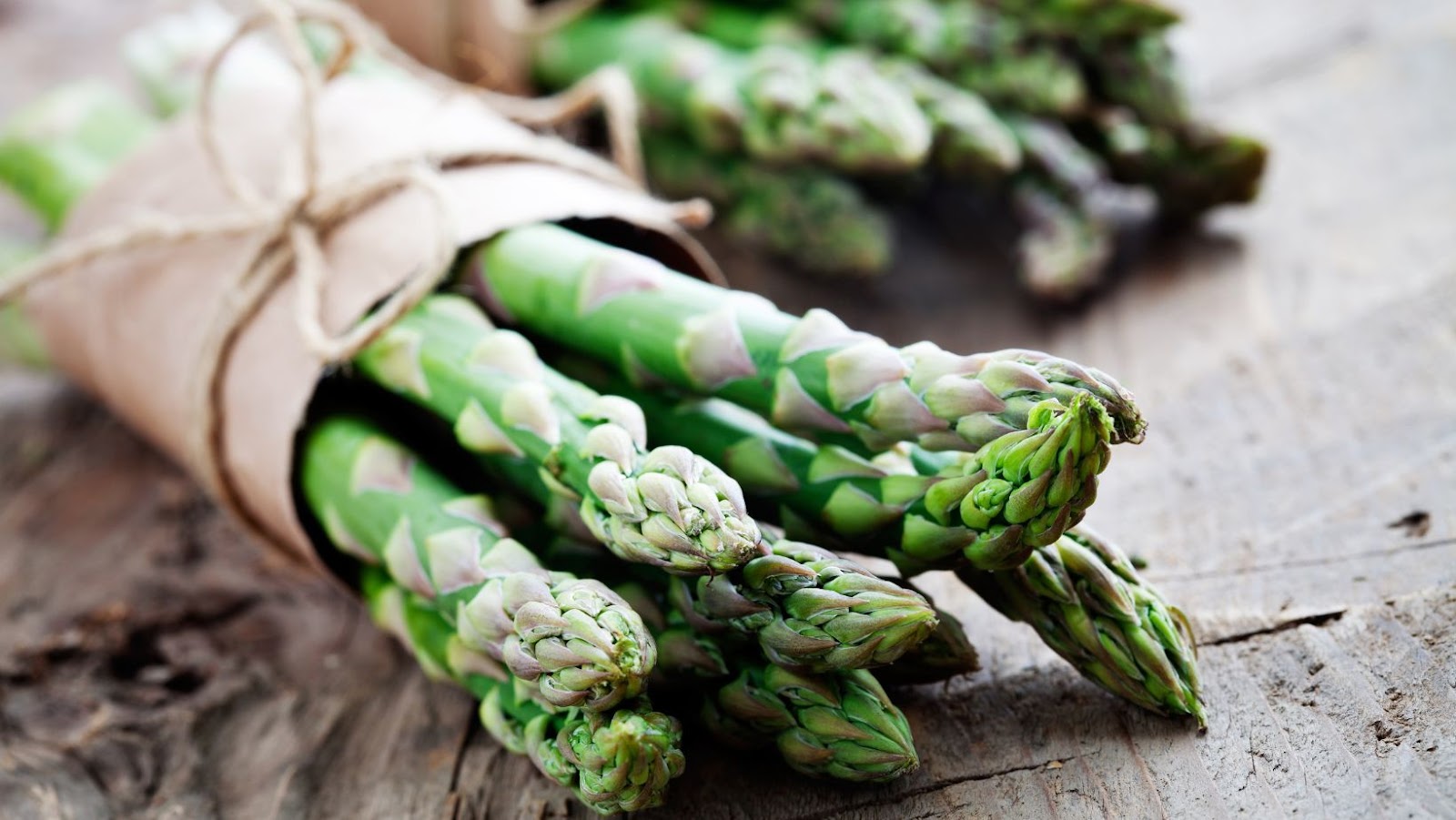To prepare for transplanting asparagus, you need to choose the right time, select a suitable location, and prepare the soil. Timing is crucial, and the right location can greatly impact the growth of the plant. Preparing the soil correctly can help ensure a successful transplant.
How to Transplant Asparagus
For a bumper harvest of top-notch asparagus, it’s key to pick the correct time for transplanting. This depends on the environment – soil temperature and dampness, the plant’s growth, and the expected climate.
Harvest success relies on the soil being at least 50°F at planting depth. This is usually early spring or autumn, depending on where you live. Asparagus needs at least six hours of direct sunlight a day, and the ground must drain well so it doesn’t become waterlogged.
When transplanting, remember that dormant or just-emerging crowns are less likely to suffer shock and will have more time to get their root system going before they sprout foliage.
Timely transplanting not only leads to higher-quality spears earlier on in the season, but also reduces weed and pest risk. So pick the correct transplantation period for your asparagus crop and enjoy the rewards! Just make sure you select a sunny spot – otherwise your harvest will be nothing but a shade of disappointment.
Selecting a Suitable Location
Location is key for asparagus success. Get a site with good drainage, ample sunlight, and lots of water. This will create healthy, strong plants.
Also, avoid places that had solanaceous crops like potatoes, tomatoes, or peppers in the past three years. These could cause diseases that reduce yields. Make sure the area has no weeds to avoid competition for water and nutrients.
Look for a south or southwest-facing slope to get more sun. And get an area with lots of water, so crops don’t dry up in hot weather.
Our farmer friend learned the hard way. He started with healthy seedlings, but put them in bad soil without enough drainage and sunlight. It failed, costing him money. So, choose your location wisely if you want asparagus success!

Preparing the Soil
Make sure to be successful when transplanting asparagus! Preparing the soil is key. Here’s how:
- Check the pH – Asparagus prefers soil with a pH between 6.0 and 7.0.
- Add Compost – To boost fertility, drainage, and moisture retention, blend compost into the topsoil before planting.
- Weed Control – Get rid of any weeds by carefully cleaning the site before adding compost.
Don’t wait too long after preparing the soil. This can reduce moisture levels and hurt germination rates. Also, leave enough space between plants. Overcrowding can limit growth potential.
For a plentiful supply of yummy asparagus, make sure to give your plants lots of love and attention during the creation process! Transplanting asparagus doesn’t have to be daunting. Just think of it as veggie surgery!
How to Transplant Asparagus
To transplant asparagus, you need to know the proper steps. Get ready to dig into the process. Begin by digging up the asparagus roots. Separate the crowns. Prune and clean the roots. Then, dig the new plant hole and plant the transplants. Finally, watering and mulching the transplants are necessary.
Digging Up the Asparagus Roots
Transplanting Asparagus: How To Remove Roots
To transplant asparagus, you must start by properly removing its roots. To ensure a healthy transition to its new location, careful excavation of the root system is key! Here’s how to do it:
- Plan transplantation season around late fall or early spring.
- Stop harvesting a few weeks before transplanting.
- Cut off the green foliage for easier root removal.
- Use a garden fork to loosen soil without damaging plants.
- Once you’ve dug deep enough, pull out each clump with your hands, trying not to tear roots.
- Separate smaller plants and cut back any large roots that are growing too close together.
Our guide is essential for successful transplantation! Plus, if you’re unsure about the soil needed, consult a professional or bring soil samples when purchasing your new land plot. Separating the crowns is like breaking up with a clingy ex – it may be painful, but it’s for the best in the long run.
Separating the Crowns
Propagate asparagus with ease with this 5-step guide!
- First, dig out an established bed. Look for red-brown seedlings.
- Then, create trenches long enough for the crowns.
- Carefully take out the mother crown with all of its roots intact.
- Finally, split the crowns into smaller sections and plant them. Water and mulch thoroughly afterwards.
- Don’t transplant too often or too quickly – it can weaken the root system. Start pruning and cleaning roots today and watch your asparagus grow!
Pruning and Cleaning the Roots
Pruning and cleaning asparagus roots is a must prior to transplanting. Remove any damaged or dead roots and trim excessively long ones to promote healthy growth. Here’s a 4-step guide on how to do it:
- Gently dig up the asparagus plant with a shovel or garden fork, without damaging delicate roots.
- Cut off any brown/blackened parts with sharp, clean pruning shears. Dispose away from other crops or compost piles.
- Trim long roots by 1/3 to 1/2 of their length. Encourages new root growth and better nutrient uptake.
- Rinse off soil from the root system with a hose or watering can. Let it dry before replanting.
Note: Don’t break apart the root ball unless absolutely necessary, as this will cause stress and delay recovery.
Pro tip: Dip roots in a water/liquid kelp mix before planting. Gives valuable micronutrients & stimulates root growth for a healthier plant. Digging a hole for a new asparagus is like prepping for your own funeral – hard work, but worth it for the delicious memories.
Digging the New Plant Hole
Preparing the site for transplanted asparagus requires creating an adequate planting hole. This process ensures the new plant has a stable and secure foundation. Here’s how:
- Find a spot with good drainage and lots of sun.
- Clear away any weeds and debris.
- Dig a hole 8-10 inches deep, wide enough for the asparagus crown and roots.
- Put some compost or aged manure at the bottom of the hole for added nutrients.
- Fill in half of the hole with soil before placing the crown.
- Fill the remaining around the crown, making sure no air pockets remain.
Don’t overcrowd plants when transplanting, as it can lead to stunted growth and reduced yield. Pro Tip: Add mulch or straw around the transplanted asparagus to promote healthy roots and reduce moisture loss. It may not be thrilled about the move, but it won’t hold a grudge!
Planting the Transplants
When planting asparagus transplants, it’s vital to get it right! Here’s how:
- Dig a trench deep enough to fit the roots and shallow enough that the crowns are 2-3 inches below ground level.
- Place the plants 12-18 inches apart with the crown facing up.
- Gradually fill in the trench with soil until the crown is level with the surrounding soil.
- Water well and top up with soil if needed.
Asparagus beds need soil with excellent drainage and rich in organic matter and nutrients. Adding compost or aged manure will improve soil fertility and structure.
Once a luxury only for royalty, asparagus is now a favourite among gardeners and foodies alike. To show your asparagus some love, water and mulch regularly. Moist soil and organic matter are the perfect expressions of affection!
Watering and Mulching the Transplants
For your newly transplanted asparagus, ensure the right moisture and protection. Follow these steps to water and mulch it properly:
- Watering: After transplanting, give the soil a good watering to settle it around the roots. During following days and weeks, keep moisture levels consistent with frequent but light watering. Don’t let the soil dry out or get too wet.
- Mulching: Once your transplants are in place and hydrated, add a layer of organic mulch such as straw or shredded leaves around them. This will help lock in moisture, regulate temperature, and suppress weed growth.
Monitor soil moisture levels regularly during the growing season. Check rainfall frequency and crop health indicators to provide adequate watering and mulching. Be careful not to overwater or cover with too much mulch. Good drainage and temperature control are important for healthy asparagus crops.
Transplanting asparagus is hard work, but it’s worth the effort!

Maintaining Transplanted Asparagus
To maintain transplanted asparagus successfully, you need to follow a few crucial steps mentioned in this section. With proper watering, fertilising, weed control, and protection against pests and diseases, you can ensure that your asparagus plants remain healthy and productive. Let’s explore each sub-section in detail.
Watering
Ensuring Proper Moisture Levels for Transplanted Asparagus:
- Water daily! Especially in dry weather.
- Moist soil, not waterlogged. Don’t let it dry out.
- Water deeply to promote root growth. Use a drip or soaker hose.
- Monitor moisture levels. Adjust as needed.
Overwatering can be bad too. Saturated soil can cause root rot and fungus.
Consistent watering is essential. Too little leads to stunted growth, disease, or even death!
Give your asparagus the right amount of water. Too much or too little can ruin the harvest. Get your ferns ready for a juicy feast!
Fertilising
Asparagus Transplant Nourishment!
It is essential to have a proper nourishing system for transplanting asparagus. Here are 4 points to consider:
- Use high-quality fertilisers that have nitrogen, potassium, and phosphorus.
- Apply compost for better soil structure and nutrient content.
- Avoid overfeeding plants. Too much nitrogen can lead to soft foliage and diseases.
- Asparagus is a heavy feeder crop. Fertilise in spring and after harvesting.
It is important to get the right balance of nutrients. Identify when to add different fertilisers.
Historically, gardeners used organic methods like compost or manure. Today, they still use these techniques combined with modern synthetic fertiliser methods. Plus, keeping weeds away from your asparagus is super easy – just sprinkle some magic fairy dust and cross your fingers!
Controlling Weeds
To ensure your transplanted asparagus is healthy, you must keep unwanted plants away from their growth region. Weeds can really impede on the plant’s nutrition and prevent optimal growth. So, here are some tips:
- Pull out weeds surrounding the asparagus bed using hands or hoe tools.
- Put a thick layer of mulch when transplanting asparagus to stop weed germination.
- Don’t use herbicides for weed control as they could be bad for young asparagus plants.
- If you must use herbicides, make sure it’s one labelled safe for Asparagus and is for broadleaf weeds only.
- Apply a pre-emergent herbicide only on well-developed beds since it might stop new plants from sprouting.
- Keep the planting zone clean and get rid of weed roots to stop them from spreading.
It’s important to watch out for intrusive plants since they will take away the nutrients and water Asparagus needs. Therefore, keep an eye on the surrounding vegetation.
Consistent effort is required to stop weeds from returning. If you don’t, they’ll keep coming back and cause lots of problems.
By preventing weed interference, you can enjoy years of rich produce from your asparagus. Who would have thought that asparagus would be such a hassle? Just another reason why veggies are more trouble than they’re worth.
Protecting from Pests and Diseases
Preventing pests and diseases in transplanted asparagus is key. Factors such as soil composition, water, and weather all affect the plant’s health. Organic repellents or companion plants that repel insects can help. Good drainage and aeration, plus controlling water quality, will prevent fungal problems. Pruning infected spears will reduce infestations.
For maximum protection, it’s important to weed around the plants to ensure healthy growth. Natural chemical repellents like Alliums can be planted or powdered around the base. Keep soil moisture levels accurate and soil acidity between 6-7pH to prevent Rhizoctonia Root Rot formation. Monitor hydraulic conductivity between soil layers to reduce Fusarium Crown Rot.
Inspecting plants regularly is essential to detect any onset symptoms early and reduce treatment costs. Harvesting transplanted asparagus will leave you with stalks that are worth their weight in gold.
Harvesting Transplanted Asparagus
To reap the rewards of your carefully transplanted asparagus, you must master the art of harvesting it efficiently. With [title] covering [sub-sections], you can be sure to make the most out of your harvest. Learn the best time to harvest, the proper techniques for harvesting, and some helpful tips on storing your freshly picked asparagus.
When to Harvest
Transplanting asparagus is essential for good growth and yield. When to harvest depends on the age of the plant and its health. To decide, farmers check the height of the asparagus spears. A table with spear heights and their development stage, can help. E.g., 8 – 10 inches are early harvest, 10 – 12 inches is mid-harvest.
Temperature and soil moisture levels also affect the harvesting timeline. An experienced farmer learnt this the hard way. They once harvested too early due to market demand, resulting in lower quality produce. Now they prioritise monitoring spear length over external pressures, for better yields.
Harvesting asparagus is like playing Operation – one false move and you’ll get an angry vegetable!
How to Harvest
Collecting asparagus effectively requires following certain advice. Wait until the spears have grown to at least 7 inches. Use garden scissors or a sharp knife to cut the spears just below the soil surface. Be careful not to harm any other emerging shoots. Place each spear into a basket or cool storage area.
Harvest period usually lasts 8 weeks. Refrain from cutting all spears at once, leaving some to grow more fully before harvesting. Monitor weed growth and remove any around mature spears. Protect developing roots by not tilling next to plants, and return waste materials back to beds. By following these measures, maximum yields can be promoted for a bountiful asparagus season. Store asparagus properly to avoid a stem-catastrophe.

Storing Harvested Asparagus
Want to keep your harvested asparagus fresh and tasty? Here’s how!
- Cut the ends of the stalks at an angle.
- Put the trimmed stalks upright in a container of water, like a vase.
- Cover loosely with a plastic bag.
- Store in the fridge for up to 5 days.
- But remember, if you’ve cooked asparagus, consume it within 2-3 days.
Science Direct published a study in 2018 which found that asparagus stored at temperatures above 4°C (39°F) can grow bacteria and spoil quickly.
So, store asparagus properly to maintain its quality – with no superpowers required!
Conclusion: The Benefits of Transplanting Asparagus.
Transplanting Asparagus – A Key to Reaping Benefits!
Transplanting Asparagus is a must for its growth. It has many advantages. Here’s a table to show them:
|
Benefits |
Explanation |
|
Enhanced Growth |
Transplanting boosts better harvests. |
|
Improved Quality |
Replace weaker plants with stronger ones. |
|
Efficient Usage |
Saves money & resources. |
You must know when to transplant for maximum profits. Healthy crops transplanted in the right way can save costs and guarantee long-term success.
Asparagus needs good soil, sun, & nutrient-rich fertilisers. Knowing transplanting’s advantages makes farming simpler & more lucrative.



